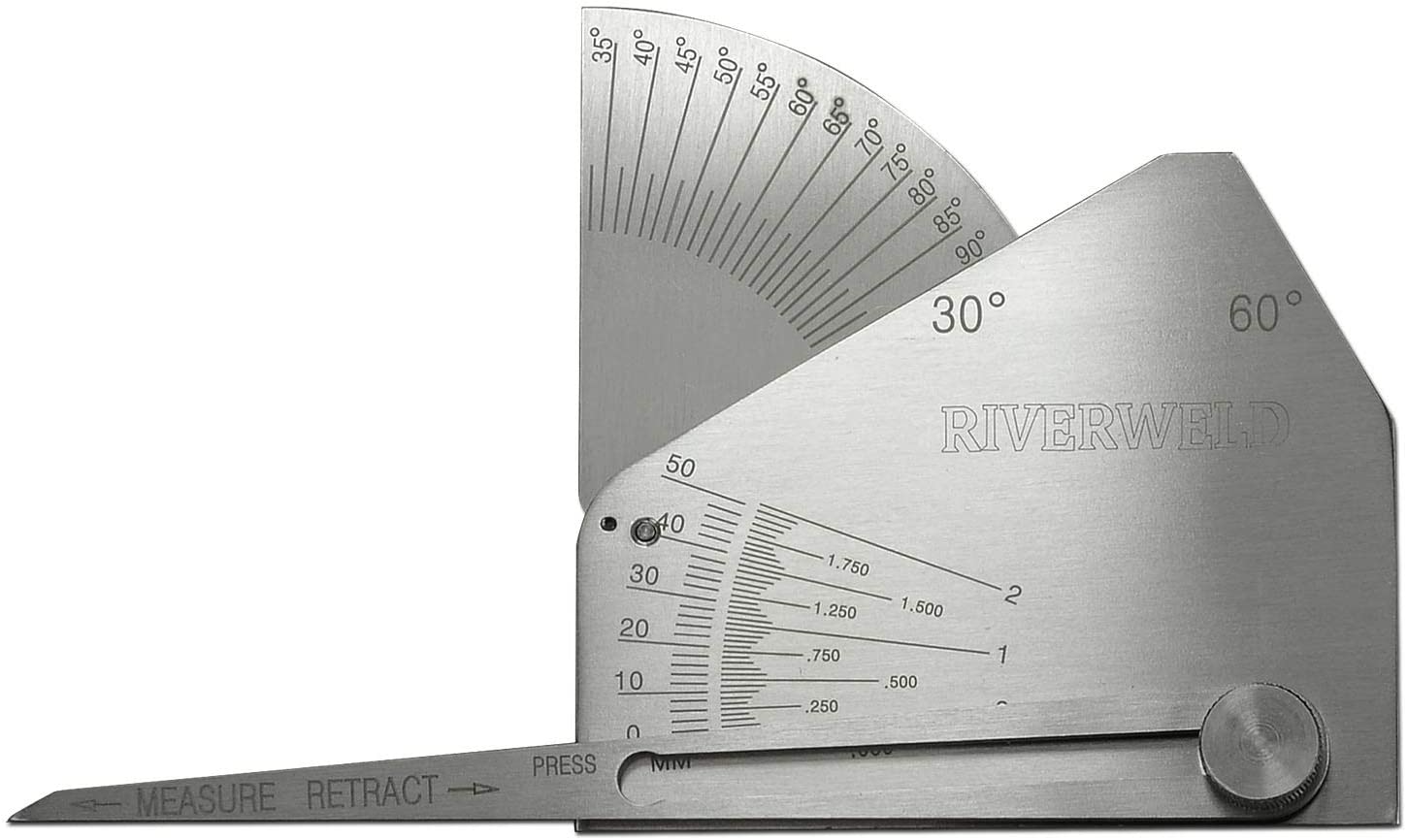Cutting-edge Tools and Techniques for Accurate Gauge Fillet Weld Measurements
Cutting-edge Tools and Techniques for Accurate Gauge Fillet Weld Measurements
Blog Article
The Ultimate Guide to Fillet Weld Quality Assurance: Making Sure Strength and Durability in Your Welded Joints
In the world of welding, ensuring the stamina and toughness of fillet welds is paramount for the integrity of welded joints. As we begin on this expedition of fillet weld top quality control, we will certainly uncover important aspects that affect weld toughness, dive right into effective inspection methods, and talk about methods for protecting against usual weld flaws.
Relevance of Fillet Weld Quality Assurance
Ensuring proper fillet weld quality assurance is critical in guaranteeing the structural integrity and longevity of welded parts in numerous sectors. Fillet welds are generally made use of in architectural steelwork, bridges, stress vessels, pipelines, and other crucial infrastructure where the strength of the weld is essential to overall safety and security and efficiency. Quality assurance procedures such as visual evaluations, non-destructive testing, and adherence to welding treatments aid determine potential defects like absence of blend, incomplete penetration, damaging, or extreme reinforcement.
Key Factors Impacting Weld Strength
Attaining ideal weld strength needs mindful factor to consider of various key elements that affect the integrity and longevity of the bonded joint. The very first vital element appertains joint preparation, which includes cleaning the base metals to remove any pollutants that can compromise the weld. Additionally, the fit-up of the joint is vital to make sure correct penetration and blend of the filler material.
The choice of the ideal welding method and criteria also plays a considerable duty in identifying weld stamina. Variables such as warm input, traveling rate, and electrode angle can impact the high quality of the weld. Preserving the proper interpass temperature level during multi-pass welding is crucial to protect against cracking and guarantee a strong bond between the layers.
Moreover, the selection of filler product and its compatibility with the base steels is crucial for achieving high weld stamina. Utilizing filler product with the proper mechanical properties can enhance the overall integrity of the weld. Post-weld warmth therapy and appropriate assessment methods are vital steps in guaranteeing the strength and resilience of the welded joint.
Examination Approaches for Weld Honesty

One more vital examination method is liquid penetrant testing, where a liquid dye is related to the weld surface area - Gauge Fillet Weld. The color seeps right into any kind of surface-breaking issues, making them noticeable under UV light. This method works for discovering problems that might not be noticeable to the nude eye


Ultrasonic testing is additionally extensively made use of for examining weld honesty. High-frequency noise waves are directed right into the weld, and any disturbances in the acoustic wave pattern suggest possible problems like splits or lack of blend.
These evaluation approaches play an important duty in guaranteeing the top quality and reliability of welds, eventually adding to the general toughness and resilience of bonded joints in industrial settings.
Protecting Against Common Weld Flaws
In order to keep the structural stability of bonded joints in commercial applications, it is crucial to carry out preventative steps to deal with typical weld flaws. One typical problem is absence of blend, where the filler material stops working to bond appropriately with the base steels, causing weak areas in the weld. Continue This can be prevented by ensuring appropriate warm control and using the right welding method.
One more constant problem is porosity, brought on by gas entrapment in the weld metal throughout the welding process. To avoid this, it is necessary to cleanse the base metals thoroughly, use dry electrodes, and preserve an appropriate welding atmosphere with appropriate air flow.
Furthermore, fractures in welds can jeopardize the joint's stamina. To prevent this flaw, it is vital to regulate the air conditioning price after welding, utilize pre-heating when needed, and choose suitable welding specifications.
Enhancing Weld Sturdiness With Appropriate Methods
To reinforce the longevity and reliability of bonded frameworks, utilizing advanced welding methods is crucial. One vital technique to improve here weld resilience is to guarantee proper weld grain positioning. By positioning the weld grain properly within the joint, the weld's stamina and resistance to fatigue can be significantly boosted. Furthermore, utilizing the correct welding criteria, such as voltage, present, and travel rate, is vital for achieving a sturdy weld. These specifications directly influence the weld's penetration, fusion, and general quality, adding to its durability.
Choosing the best filler steel and making sure the sanitation of the base steels can prevent inclusions and other problems that might jeopardize the weld's toughness. By applying these correct strategies, welders can make certain that their bonded joints show exceptional strength and resilience, meeting the highest quality standards.
Conclusion
Finally, maintaining top quality control criteria for fillet welds is critical for making certain the toughness and longevity of bonded joints. By comprehending the essential elements affecting weld toughness, making use of assessment techniques for weld integrity, preventing usual weld issues, and utilizing proper strategies, welders can boost the general resilience of their welds. It is important to prioritize quality assurance procedures to produce reliable and durable bonded joints.
In the realm of welding, ensuring the toughness and sturdiness of fillet welds is critical for the honesty of welded joints. As we get started on this exploration of fillet weld quality control, we will certainly Go Here uncover necessary elements that affect weld stamina, dive into reliable evaluation approaches, and go over strategies for stopping common weld flaws.Achieving ideal weld toughness requires mindful consideration of different vital elements that influence the honesty and toughness of the bonded joint (Gauge Fillet Weld).In verdict, preserving high top quality control standards for fillet welds is important for ensuring the toughness and resilience of bonded joints. By recognizing the essential aspects influencing weld strength, using examination methods for weld stability, protecting against common weld problems, and utilizing correct strategies, welders can enhance the overall toughness of their welds
Report this page